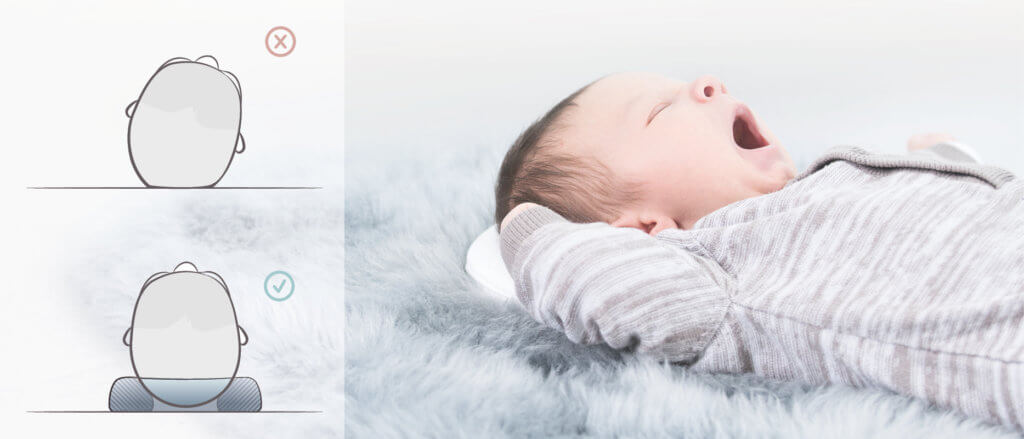
HOW DO EARLY CHILDHOOD DEFORMATIONS OCCUR?
Skull deformations can have different origins and characteristics. The most frequent are the skull deformities caused by the position of the skull. This risk is increased by the baby’s medically recommended supine position. This is recommended by doctors and midwives as an important measure to prevent sudden infant death, particularly because the newborn babies cannot move from the supine position to the potentially dangerous prone position, or only do so with great difficulty. However, since the introduction of this important measure, an increase in positional head deformities has been observed. This is referred to as plagiocephaly or brachycephaly, a crooked skull or a flat head, the severity of which can vary from mild to very severe.
These two different deformities usually develop in the first weeks of life, when the newborns are still sleeping a lot and have little mobility. The top of the skull is still very soft and sensitive, especially in the first few weeks of life. As a result, the babies can lie flat on their heads. This is where the term “positional” deformation comes from. If they develop a “favorite side” for various reasons, an asymmetrical flattening may develop. Once flattened, this causes the head to fall in the same direction over and over again.
Positional deformities may become worse by the fourth month of life. . After that, a natural improvement usually occurs. This is due to the fact that, with timely development, infants become more mobile and turn on their stomachs independently. Whether this is sufficient to compensate for a deformity depends on the severity and cannot be predicted.
Premature skull suture occlusions are also a much rarer cause of head deformities. In these cases, one or more (in newborns still uncovered) cranial sutures are ossified too early. The normal growth pressure exerted by the brain cannot then lead to uniform skull growth in all directions, but the head spreads out more in the open directions to compensate. This in turn also causes head deformation. Depending on the severity of the deformity, surgical therapy can be considered.
Can any baby develop a positional head deformity or are some babies particularly affected?
Yes, basically any baby can be affected by a positional head deformity. However, certain factors can increase the risk of developing a positional deformity. Among other things, a head deformation is also favored by constricted conditions already in the womb. This can be a very early breech presentation or a multiple pregnancy. In addition, deformities can occur during birth, for example due to a forceps or suction cup birth.
Children whose mobility development is generally delayed or limited are also at risk of developing positional deformity. This includes, for example, children whose neck muscles are shortened on one side (torticollis).
However, premature infants are particularly at risk because they are less mobile and their skull is even more sensitive than that of newborns. Therefore, it is generally important to be extra attentive with these children and to apply preventive measures to avoid relevant cranial deformations in the first place.
HOW CAN YOU DETERMINE THE CAUSE OF HEAD DEFORMATION?
Different criteria exist that can be used to conclude the cause of the deformation of a skull. First of all, the deformities of the baby’s head caused by positioning are simply much more frequent and therefore more likely to be the cause.
A further criterion for differentiation is the development of the head shape over time. Deformations due to skull suture occlusions worsen as the months go by. Situation-related deformities, on the other hand, improve after an increase with a maximum to approx. the 4th month of life due to increasing mobility of the child. However, the extent of the improvement and whether a complete spontaneous compensation takes place are uncertain and must be closely monitored, since an intervention must be carried out as early as possible before a plagiocephaly or brachycephaly is strongly developed.
A pediatrician is the first point of contact for suspected deformation of the skull of babies
If you notice head deformities in your child, you should contact your pediatrician or visit a specialist, for example in craniofacial clinics. In addition to a thorough physical examination using ultrasound, the doctor can then rule out or prove that the sutures of the skull are closed. This is very reliable nowadays. However, if there is still uncertainty, further examinations can be carried out.

